By the early 1990’s Nikon had lost their dominance due to the rise of Canon’s EOS system. But the company fought back wit the legendary F90 prosumer camera that served as the bridge to the F5. It would be joined by the F70 (N70 in US) serious midrange model. But the Nikon F70’s infamous Fan interface made an otherwise great camera, one of the least desired Nikon models today.

By the 1970’s Nikon had become the dominate player in the pro and prosumer SLR market. Canon however were lead amongst it’s rivals. In the mid 80’s as AF started to appear both camera had failed AF Launches (Nikon F3AF (1983) and Canon T80 (1985)). Nikon dusted themselves down and launched the F-501 (N2020) AF camera body in 1985. This would be followed by the legendary F4. At the time their main rivals in this new world appeared to be Minolta.
But canon were about to strike back.
And that change is now one of the key moments in photography history. And a move that led Canon to dominating the camera world today,
Battle of the Mounts
Nikon stays Legacy
Nikon had stuck to their legacy F mount which dated back to the 1950’s and is still in use on Nikon’s dSLR today. The longstanding mechanical mount has been tinkered with aover the years. With AF Nikon added 5 electrical contacts. These original AF lenses used a motor on the camera body that turned a screw on the lens base.

This would be the mainstay system into the 90’s and even the 2002 F55 used this system. Worth noting folks sometimes call these lenses AF (1st gen) and AF-D (2nd gen). The latter is actually wrong as as the D stands for distance and is the system by which the lens can tell what focus distance is set to improve metering (the 3D bit). Almost all new Nikon lenses made from 1992 onward have it including manual focus lenses and the newer AF-I and AF-S lenses that we’ll come onto. They just don’t bother showing the D mark.
Canon’s reinvention
Canon tried a similar thing with their T80 using their legacy FD mount. It wasn’t successful. But what is noticeable is the 3 AF lenses made for it had the motor on the lens, not the body.
Canon took a long hard look at what went wrong and took a massive gamble. But perhaps a calculated one. Other rivals Minolta had ditched their legacy mechanical mount with their new Dynax models. The new a-mount lenses coupled both electronically and mechanically and gave Minolta a massive leap forward. In fact the mount lives on with Sony α mirrorless cameras today
Whether Minolta influenced Canon or not, Canon would do the same but much more radically.
The new Canon EF mount has no mechanical linkage bar the bayonet holding the lens to body. Aperture and AF were controlled electronically via a series of contact. They feature an on lens motor which gave a boost to focus speed. This was totally different to all rival
The impact was massive. Canon managed to unseat Nikon as the choice of sports and news photogs by the early 1990’s. It’s impact is still seen in the digital age as Canon remain No 1 in terms of sales.
Nikon’s Fightback with the F90
Nikon was left reeling and some would argue never fully recovered. The company were considering introducing their own lenses that had build in motors. The 1988 F4 was designed to work with these although the new AF-I and later AF-S lenses would not arrive until 1992. Its autofocus module was cutting edge in 1988 but by the early 90’s was behind the pack. It’s telling this ended up on the budget F-401s, F-401x and the later F50 & F60 models although none of these could autofocus AF-S lenses.
So the company needed a newer faster model. The F5 was still a few years away. So in came the F90 with its CAM246 module, a legendary camera for Nikon users. It was geared for both the pro and prosumer markets and the bridge between the F4 & F5.
But Nikon realised they needed a mid range
Enter the F70
Launch in late 1994, it really didn’t hit the shelves until Q1 1995 outside Japan. Popular Photography did a full review in March 1995 but on the street prices are hard to get. Many vendors in the Magazine held the Nikon prices tight but in December 1995 you could buy one with a generic 50mm 1:1.8 lens and some gear for just under $700USD before sales tax at Cambridge camera exchange.
And the opposition
For ease I’m focusing only on Canon here (apols to Minolta & Pentax fans)
Canon by this point had a bigger range and the F70 probably sat between 2 models at launch.
The 1991 EOS 100 (aka the first Elan) was listed as Canon upper consumer model just below the Prosumer EOS 5 (aka A2) arguable is as much a rival for the F90 as the F70. Cambridge camera exchange on the same advert would sell it for just under $540 with the typical 28-80mm kit lens. It’s possibly cheaper as the successor the EOS 50 (Elan II) had been launched a couple of months before but likely not yet widely available.
They’d also sell the 1993 EOS 500 with similar gear for $400 cheaper than the F70. It’s always hard to place these models exactly against and in fact the EOS 500 was technically Canon’s bottom model at the start of 1994. But by the start of 1995 the EOS 5000 would sit under it
It had a fair massive market share by the time the F70 arrived. It would be revised as the 500N in 1996
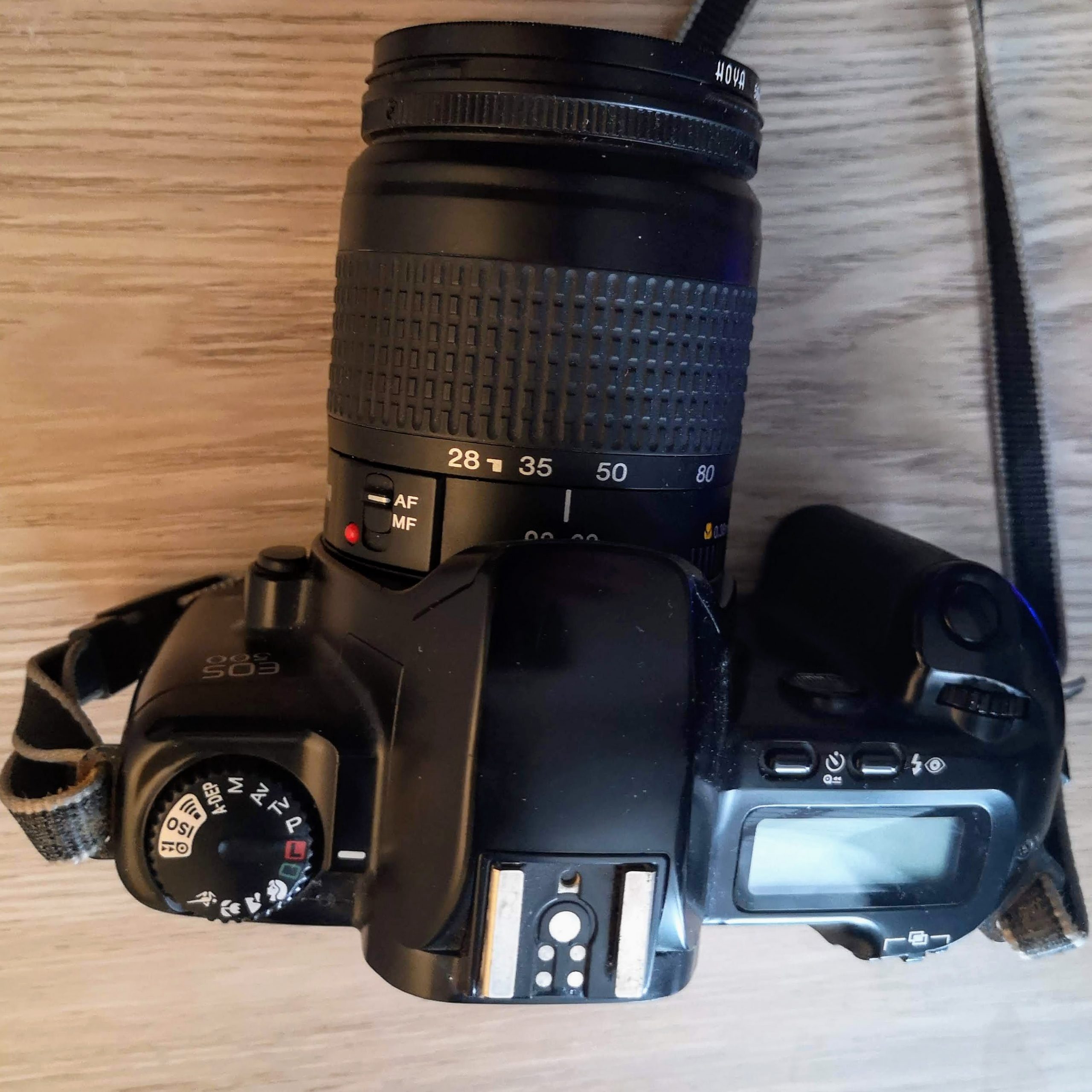
First looks
The F70 has that nice chunky appearance that it shares with the F90. It’s It’s a solid and oozes a feeling of quality. That’s in due to the heft and even though the EOS 100 is similar weight (just 5gms lighter than the 585gms F70 feels better made). Both are more robust than the 355gms EOS 500 (non QD model). That said it has the advantage of being a lighter carry.
Both the Canons look a little more timeless. The 500 especially could be mistaken for a dSLR. Sadly it was also available in 90’s two tone silver and black plastic. Mines is thankfully black unlike my 500N which only came two tone -grrr. There is more corners cut so you have a pentamirror not prism and shock horror a plastic mount. It feels well enough made but it lacks that heft of quality that both the F70 and EOS 100 have.
But come to controls Nikon just go rogue. Both the Canons could be mistaken for a modern dSLR if viewed from the top. Pretty typical mode dial on the left side and monochrome LCD on the right.
The Nikon has the Fan..…
Under the hood
We’ll leave the Fan & controls for the moment
Under Nikon’s hood you have a CAM274 AF module, This offers a single focal point but with both spot and wide focus range. That’s typical of this era and seen with both the Canons. Both single and continuous servo AF modes and will work in most realistic light conditions (EV100 -1 to 19)
Focusing & Metering
Three metering modes are offered – matrix, centre-weighted and spot. You have EV adjust, Bracketing and full DX coding Plus manual override. Metering works between EV100 -1 to 20 with a 50mm 1:1.4. You can manually set ISO setting with speeds of 6-6400ISO (or auto with DX 25-5000ISO). Shutter speeds range from 30 sec to 1/4000 sec in 1/3 steps plus bulb.
This puts it on paper ahead of the EOS 500 which also has a similar set up for AF but only working in EV 1.5-18 (the Canon however does have a AF illuminator light). It too offers matrix partial and single point metering modes but these are not quite as flexible as the Nikon being mode limited.
Exposure wise it offers similar ISO setting options but shutter pegs out 1/2000 with just 1/2 stop increments. Metering range is just EV 100ISO 2-20.
It’s bigger brother the EOS 100 shows it’s age with an effect metering of EV100 0-18 but offers similar shutter speeds to the Nikon but in 1/2 steps. It like the 500 can match ISO range but also can’t easily adjust metering modes.
Flash & Power
All cameras have built in flash. Nikon’s built in flash is more powerful (GN 14m/100ISO v 12m/100ISO) than it’s rivals. Whilst both it and the EOS 100 X-sync at 1/125 the EOS 500 only syncs to 1/90.
Nikon also introduced 3D matrix multipoint metering for flash with this camera giving it an edge over the Canon models. The Nikon offer the usual gamut of flash modes (including rear curtain, slow sync ± red eye)
Both the F70 and EOS 500 use 2xCR123A for power. The EOS uses a 2CR5 unit. Both are easily sough and two CR123A are slightly cheaper esp if bought in bulk.
Motor drive & Accessories
None of them have an optional battery grip. Motor drives can do up to 3.7fps (F70), 3fps (EOS 100) and 1fps (EOS 500) respectively. Both Canons auto rewind where as you need to manually hold down 2 buttons on the F70 😖 .
That said the F70 has a virtually silent motor drive. I’d never shot a camera as quiet until I got this (my more recent F80 shares this). I actually had to check it was winding.
The camera has a dedicated Nikon proprietary remote lead socket. There is no dioptre adjust on camera but I can find sellers selling insert eyepieces for the F70 & F-601.
Viewfinder
Good bright finder with classic later Nikon layout with LCD strip showing AF area, focus indicators, metering mode, exposure mode, shutter, aperture, analogue meter, flash and Ev compensation on.
The screen is non interchangeable Nikon advanced B-type BriteView screen II. This is a good AF screen with markers for the wider and spot focus points as well as metering areas. It’s the same screen still in use on the D7500 today !
Nikon could always do a good finder IMHO and this is easier to read and use . The EOS 100 is however a close second. The EOS 500 has a similar display but with a pentamirror not pentaprism is a little darker
The control interface
The most controversial feature to many is Nikon’s interface.
As I mentioned both Canon’s have a layout that would be familiar to a dSLR/mirrorless shooter today. Canon had pretty quickly got on board with that layout by the early 1990s
Nikon was IMHO struggling to find a path and would take until the end of the decade to come to the realisation that the mode and command dial set up was the way to go when the F60 and F65 arrived.
Until then Nikon’s most advanced interface were a monochrome screen and a set of push buttons seen on the likes of the F-601, F-801 and even the F90. It’s clunky but works.
And look I guess had they stick with that, the F70 would have felt a bit more normal and I dare say more desired than it is.
But they didn’t
Welcome to The “Fan”
This was the first Nikon to feature a range of true scenic modes as well as the traditional PSAM modes. It even gave you the chance to set custom settings
It’s just you need to use the fan.
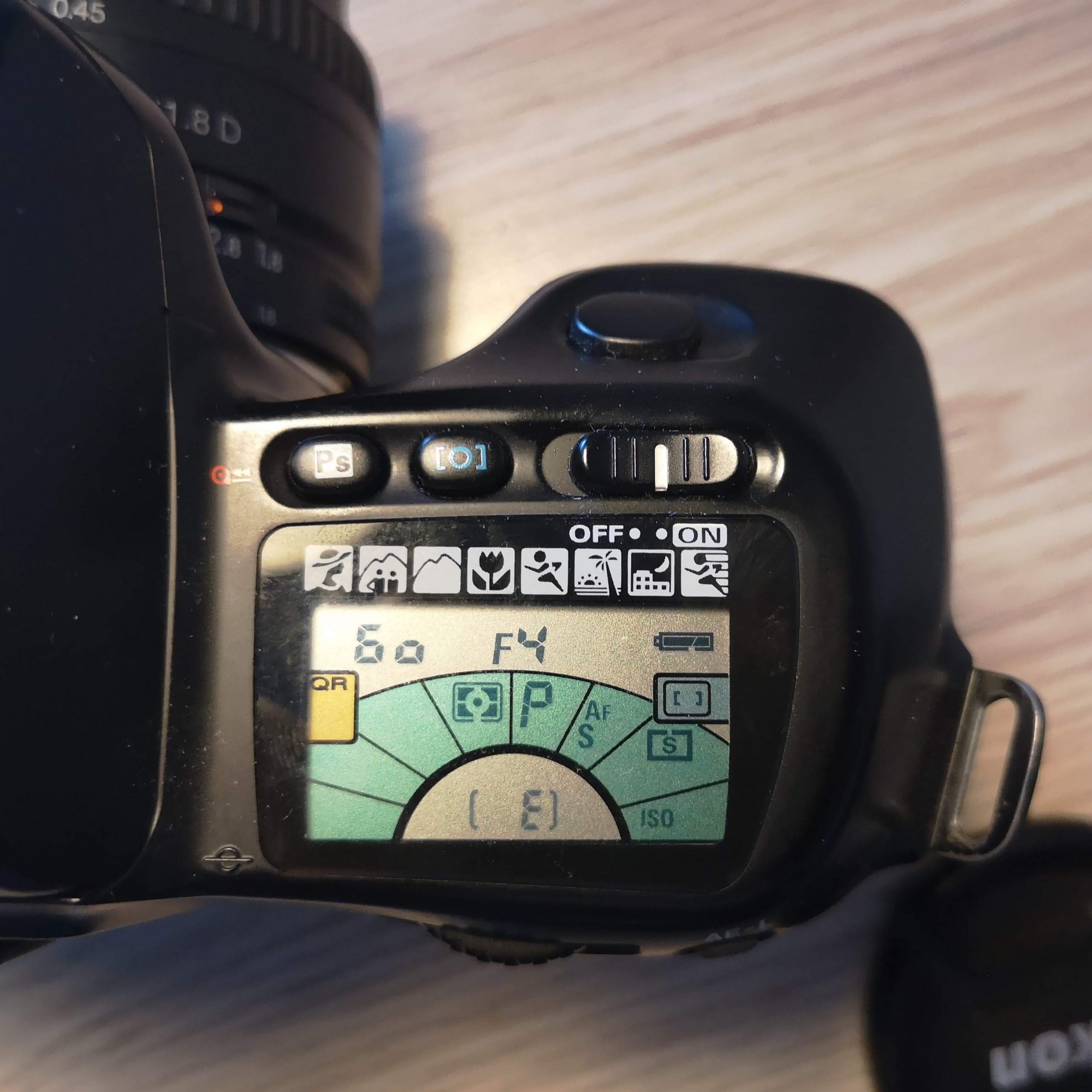
What you get is a weird LCD panel with segments spread out into a fan shape hence the nickname.
The LCD isn’t in itself awful. But accessing it is
Controls
To use it you need to do a series of button presses and turning of the rear command dial (sits at level of thumb grip). Sometimes this is a single push sometimes 2 . To be frank it’s an ergonomic hot steaming mess until you get into it. the only decent dedicated button is a AEL one andto even do EV compensation you need to go into the fan.
But here’s the thing.
If you’re reading this there’s a good chance you’re a shooter whom spend 90% of your time with the camera set at your preferred choice of PSAM modes (I’m a AP boy)
The camera does offer PSAM and custom program mode. Scenic modes (so called Vari-program) are on offer too. These have a set of pre set characteristics
There’s an interesting group so you get your usual sports, landscape, portrait, night shooting and macro modes. There’s a nod to Canon with a hyperfocal mode but also a Silhouette and stop motion mode. Inaddition you can set up 2 user defined program modes although these are on a separate QR fun tab.
It’s all what you get on later cameras like the F75 but it’s just a nightmare to use and to do anything new without the manual can be a chore
Nikon F70 Lens compatibility
On paper this camera moves ahead of Canon here. It is backwardly compatible to varying extents with all F mount lenses from the AI revision in the 1970’s on up to the new AF-P which it can’t use. In fairness every other Nikon film and most digital SLRs can’t use them either. it supports the many specialist lenses such as the medical and PC-Nikkors but forget IX and invasive Fisheyes (neither surprising). It will happily in principle use DX lenses although you get cropping and given experience with other bodies not all DX lenses may work. That said I’ve tried a 3rd party Sigma DX AF-D lens and it works as should. I’ve not had any issues using Yongnuo Af-S 50/1.8 either.
Most manual focus lenses get rangefinder assist. They can’t use matrix metering or be used in program or shutter priority modes as they lack the CPU needed (except for the rare AI-P telephotos and the few chipped manual lenses nikon have made) . But that’s to be expected. There is no VR support
But there is one issue.
– Missing the G-spot
G lenses which become prevalent in the next generation bodies and are pretty much standard for Nikon lenses today. These have fully electronically controlled apertures. But most older Nikon AF bodies like the F70 lack the linkage to be able to fully use them. You can use these lenses in Program (inc Ps) and Shutter priority modes but not AP or manual.
The sad thing is thing is Nikon could have added this. The older Nikon F-401 series has the linkage and it launched in 1987. Ironically the two budget models on sale with the F70 (the F-401x aka N5005 & F50) both offer full PSAM.
Go Figure.
The good news though is the standard program basically works in matched pairs so you can ajust in the same way you’d use AP.
And the Canons ?
In terms of native support you are limited to just canon EF lenses. the camera can’t use cropped frame EF-S lenses but that not likely an issue. They both have an issue with some newer 3rd lenses like my Yongnuo 50/1.8 (the lens mounts fine and seems to work but you get an error code on firing and the mirror locks temporarily.
So in terms of choice game over ? Well not quite Canon models work with vintage lenses via adaptors notably for cheap M42 mount ones. Granted there is no focus assist but you do get metering with Aperture priority (Av) and Manual modes.
In use
If you park this into your desire mode (that’ll be Shutter priority or program with a G lens) this a quite pleasing camera to use. The rear command dial works well enough with SP or program.
I still can’t get over just how quiet this is to use. The viewfinder is a breeze too.
The Focus is faster than the older Gen AF Nikon’s that I’ve used but I struggle to notice a difference between using a newer AF screw lens and a AF-S one.
And in this use it feels just that bit smoother compared to the aging EOS 100 and EOS 500.
However wanna change a settling and you have to visit the nightmare of the fan. Now I’m kinda stick it AP or program mode type guy so that on paper isn’t a big issue but I do fiddle with EV compensation. With the Canons you hold a button down and turn their command dial just as most later film and digital SLR do. Here you need to go into the fan. Move the selector to EV comp icon. Then hit another set of buttons to adjust.
And that’s just to change EV
Cost
Looking at recent eBay UK sales this seems to sell between £5-20 body only making it one of the cheapest Nikon bodies available. The F65 sells at £10-20 and the F75 a bit more. The F55 is a little cheaper and easier to live with if all you shoot with is AF (Non AF-S) glass.
Final Thoughts
In brief this could have a been a brilliant camera for its time if they didn’t stuff up the interface.
This truly is a game of two halves. On one hand you have a an incredibly well spec’d midrange camera offering better faster focusing, almost silent and world leading inbuilt flash tech at the time of launch. It has Nikon 3D matrix metering which was still class leading and can mount a lot of Nikon glass. It can importantly meter your manual focus glass too and give you rangefinder assist when focusing
Pretty robustly made and a joy to shoot as long as you don’t need to fiddle. It’s the first Nikon SLR to offer scenic modes too and has dedicated custom shooting modes. It very much feels like a lighter everyday carry version of the Legend that is the F90.
That’s until you need to change anything.
Fanning the flames
The interface on the F90 (and older F6-1 & F801) is not great but is more simpler. Although the F90 feels positively stone age compared to the Canons, it’s a walk in the park compared to the F70. Amazingly Nikon did not revise this and the camera remained a mid range model until replace by the F75 in 2003 although both the F65 and F80 had already arrived. All 3 are much easier to live with and offer multi focal points. The F65 and F75 are not as robust and have a slower upper shutter speed of 1/2000 and can’t meter non CPU manual focus lenses.
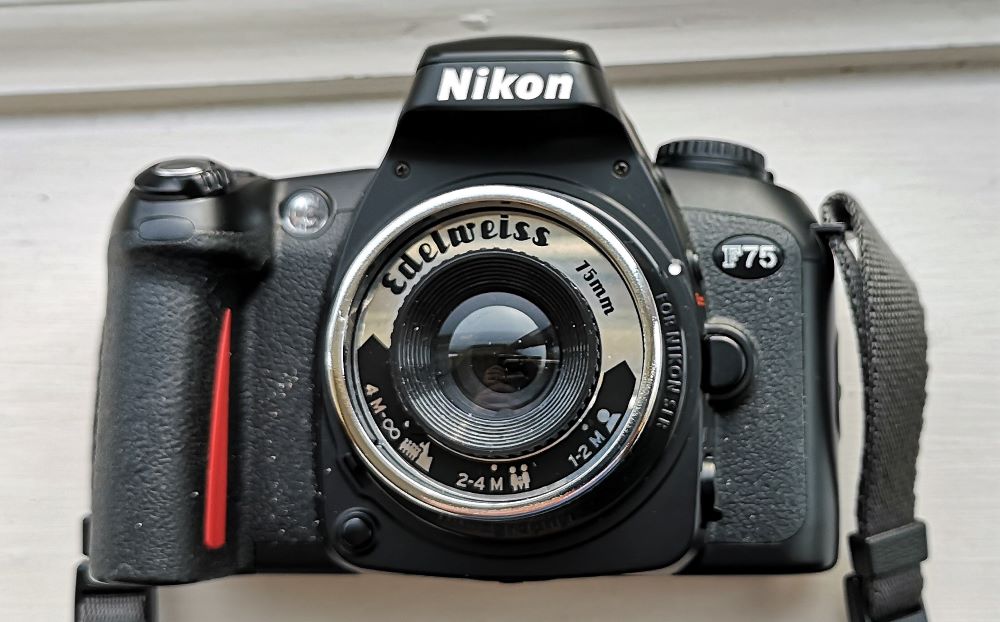
The F80 sits a little above and is a more prosumer, robust camera but it too fails to meter older glass. You need to fork out for the even more robust F100 or the F5 & F6 to get the lens capabilities of the F70 an dthe F90 models,
And Versus the Canons ?
Stuck in single mode it is a bit quicker to use than the aging EOS100 which feels a bit dated. The EOS 500 is lighter and almost catches up but is a flimsier lower spec’ed camera with a much slower motor drive. On paper the Nikon pulls ahead with the built in flash too and the metering options are much better. Of course later prosumer models such as the EOS 50 (Elan II) start to equal and overhaul the Nikon.
But try to change any settling other than doing a AEL lock and you have to use the Fan. The Canons are so much more user friendly and have logical dedicated buttons so you do EV compensation. Whereas F70 needs you to go into the fan, move to the EV tab, set another button and adjust and repeat when done.
Also think of
Nikon and Canon were not the only game in town. Pentax were also in transition from their 2nd Generation P series AF SLR to the MZ series. The MZ-5 (ZX-5 in US) arrived in 1996. The MZ-5 would go up against the F70 and offers 3 point AF but slightly slower top speeds and MD. Like the Nikon, it can use a vast array of lenses supporting almost all manual focus K mounts with metering (KA lenses get full PSAM support , older K just AP & manual) but lens support starts to peter out for Digital lenses. It can alos work with M42 screw mount lenses via an adaptor.
Minolta likewise had several 3rd gen camera around this area. arguably the closest spec is the Dynax 600si Classic (aka Maxxum 600si in US). Interesting camera in that it took a radical move from the push button?LCD settings to bring back retro knobs. It’s a design that still influences Sony today who continue to use Minolta’s A mount meaning on paper some modern lens may work here. Like the EOS cameras this can use manual focus lenses via adaptors.
And Olympus. erm…, lets just move on…
F70 Resources, Manual & reviews
Nikon still have the manual archived here but you can also find it on Mike Butkus’s site. Mir has a detailed tech spec page for the F70.
Jim Grey reviewed this just a few week ago and like me found a good camera hampered by the interface. Peggy Marsh at camera Go camera has also take one for a spin. Camera legend list it as one of the worst cameras of all time but did note once you got past the fan it was quite capable. I’ve already mentioned Popular Photography’s 1995 review which is a helpful historical perspective. They oddly gave it 4.5 out 5 stars
I discussed the F70 on the Camerosity Podcast at the end of 2021 (episode 16 about 36:20 in). Turns out I’m not alone in disliking the interface.



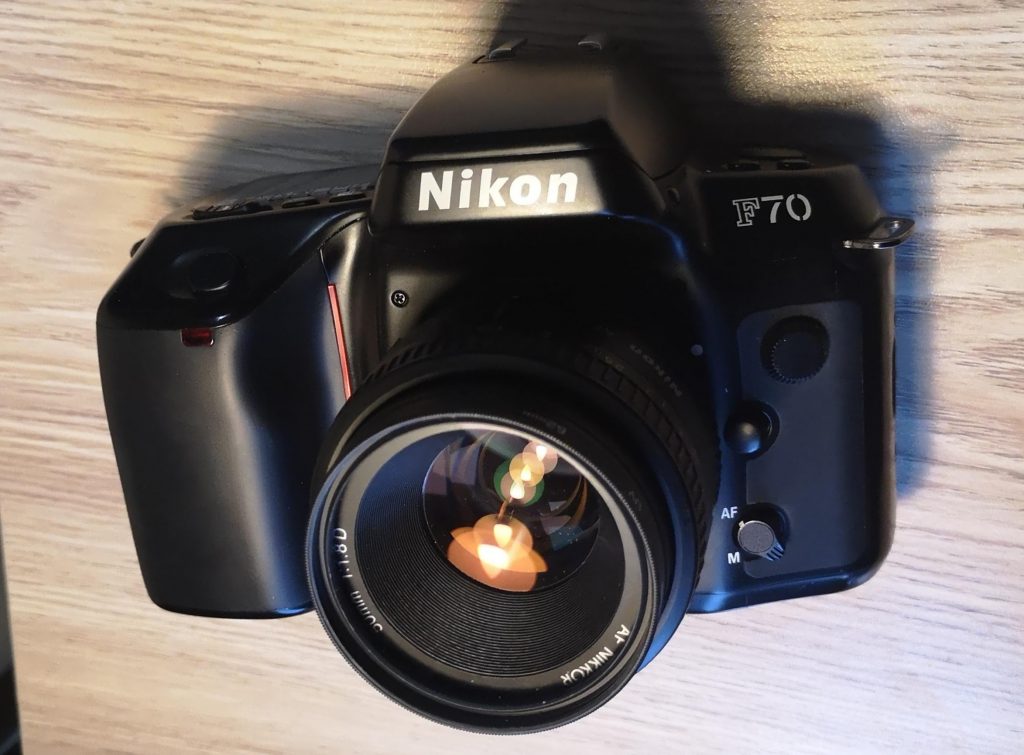


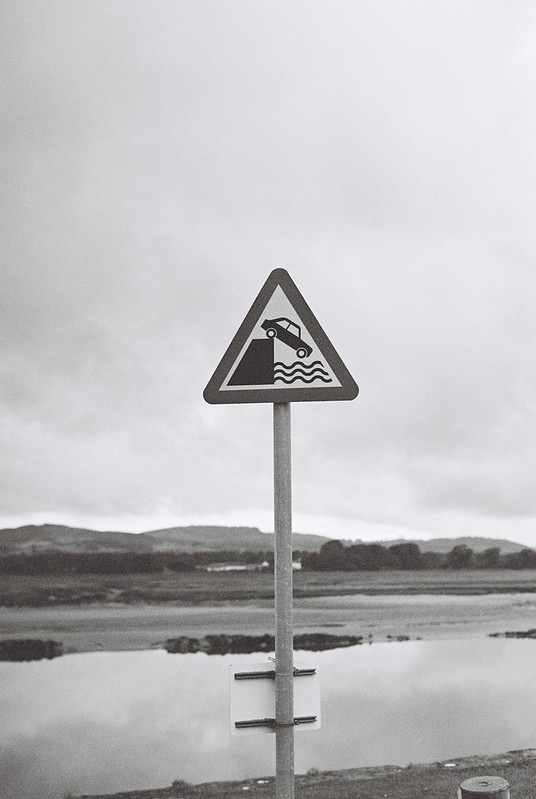
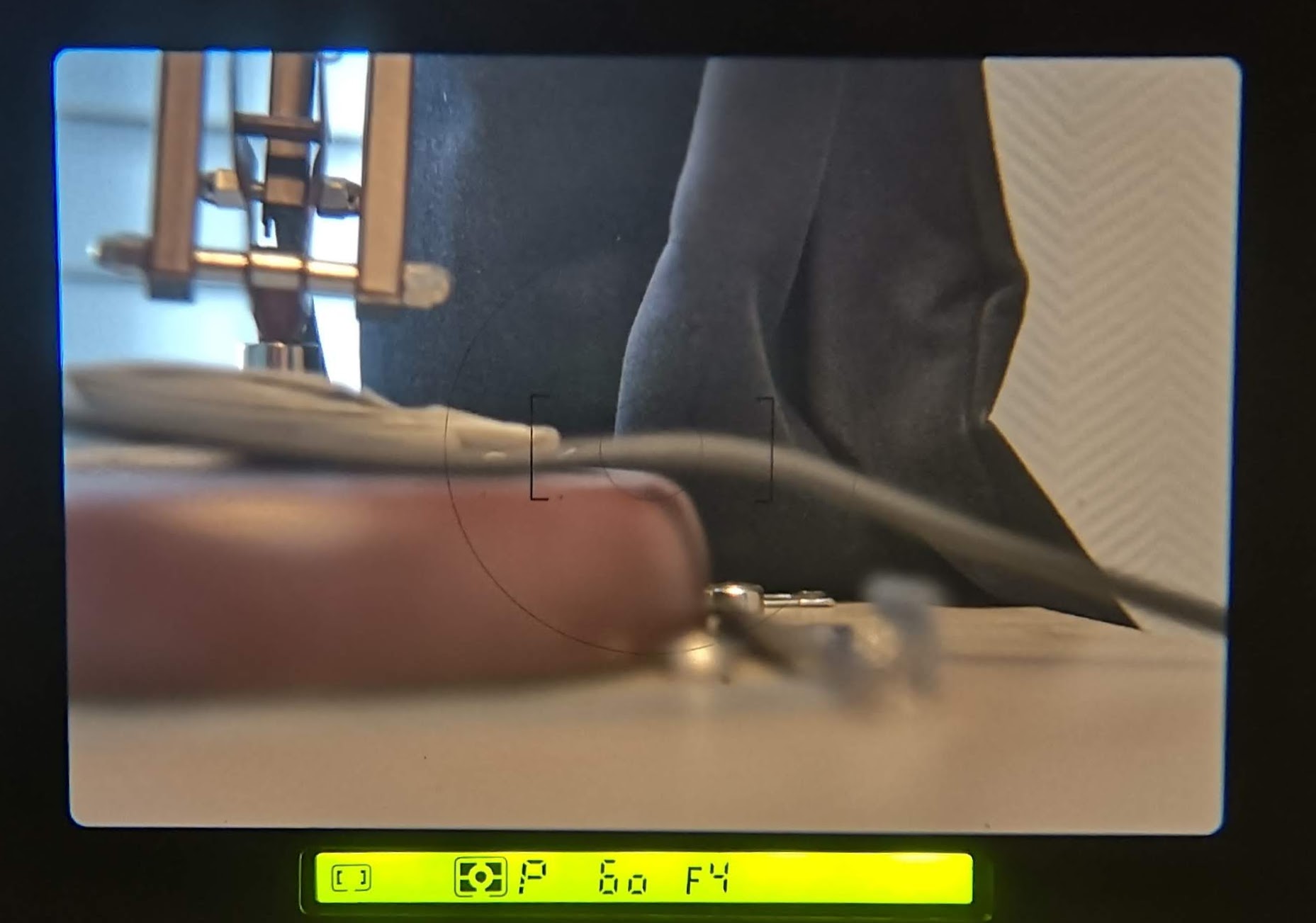


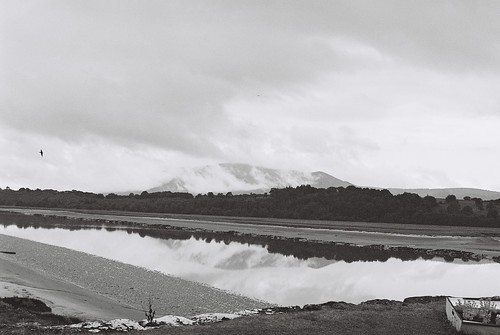
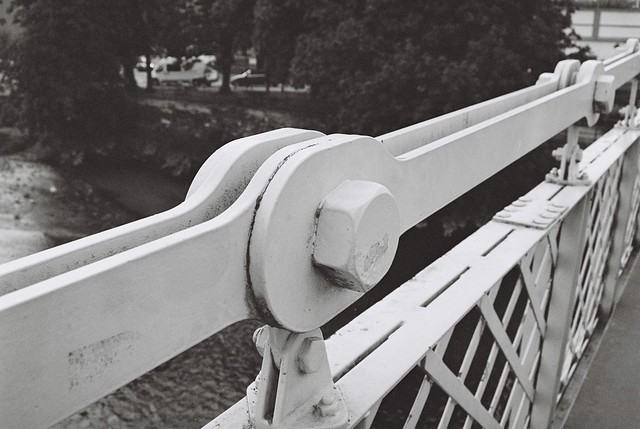
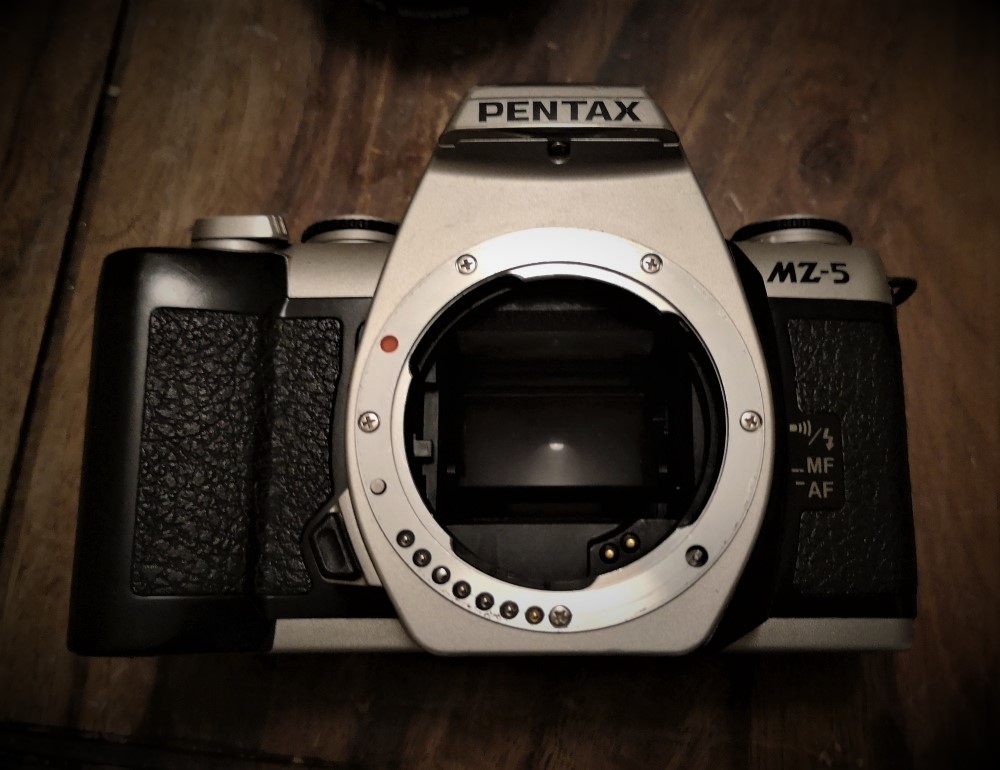
The F70 was the reason I moved from Nikon to Canon when I decided to move to autofocus, that fan and accessing it was such a pain in the proverbials that I traded in my Nikon FE for a Canon EOS 50 and stayed with Canon through the move to digital until mirrorless came along
Still shoot film regret selling my F70 an buying an unreliable F100.
Tried an F90x for a while before returning , for film, to Nikon FE’s and FM.
For digital, micro four thirds all the way.
Light , compact, and good image quality.
The best camera is the one you have with you…
TB